Students from Bilkent University have completed a community centre for Syrian refugees in Hatay, Turkey, in collaboration with their professor Chen-Yu Chiu and his architecture firm Studio Cho.
Named Taiwan-Reyhanli Centre for World Citizens, the hub is built from 400 concrete blocks repurposed from the Turkey-Syria border walls, which make the structure both earthquake-proof and bomb-proof.
It is open to refugees affected by the 13-year Syrian civil war as well as residents impacted by the 2023 Turkey-Syria earthquake, intending to encourage integration and alleviate tensions between these two communities.
“It was a hopeless place, and we saw people suffering from all kinds of difficulties,” said Chiu, who is also director of the centre.
“We knew we could fail, but we decided to try once and do our best,” he told Dezeen.
“We repurposed the concrete border walls,” he continued. “In this context, military walls became humanitarian walls – walls not to divide people, but to unite them: walls for shelter, not for borders.”
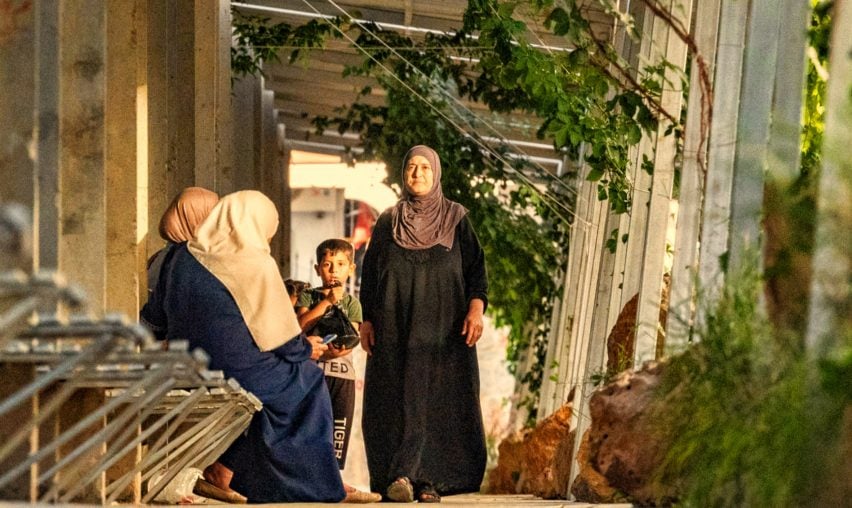
Taiwan-Reyhanli Centre for World Citizens’ consists of 52 standardised units oriented towards Mecca and designed for various uses, including sanctuary, play, worship and workspace.
The concrete-block walls are crowned by catenary-shaped roofs formed of corrugated steel sheets, which are among the details to draw on traditional Islamic architecture, such as the vaults in the Great Umayyad Mosque in Aleppo.
According to Chiu, the Taiwan-Reyhanli Centre for World Citizens was developed in three stages.
In the first stage, the team assembled the salvaged concrete blocks on-site and crowned them with metal roofs, taken from nearby industrial buildings to speed up construction and reduce on-site labour.
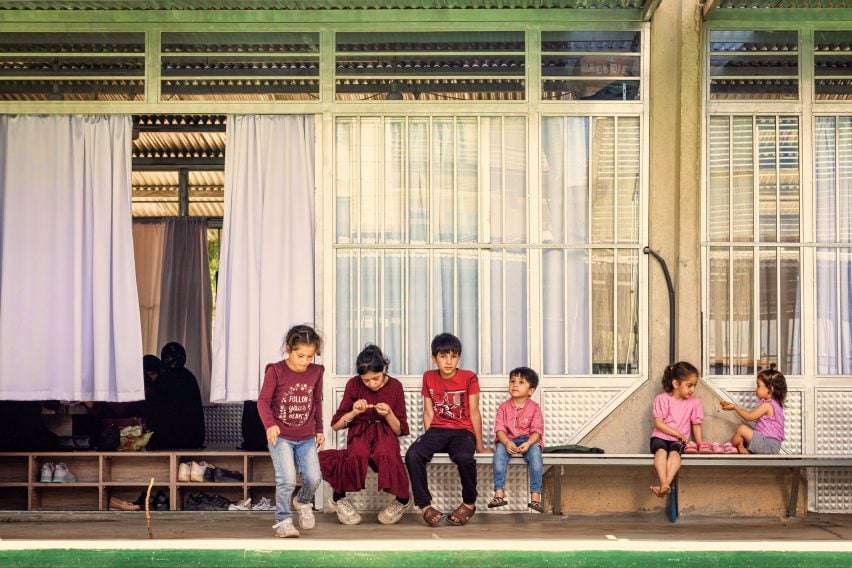
“Mass production, prefabrication and site assembly were the three pillars of our design and construction approach, ensuring the stability, aesthetics, and efficiency of the earthwork and roof structures,” said Chiu.
During the second and third stages, the team constructed and developed the rest of the site in collaboration with the displaced communities, providing them with on-site job opportunities. This was a continuation of earlier collaborations with the end users during the design process.
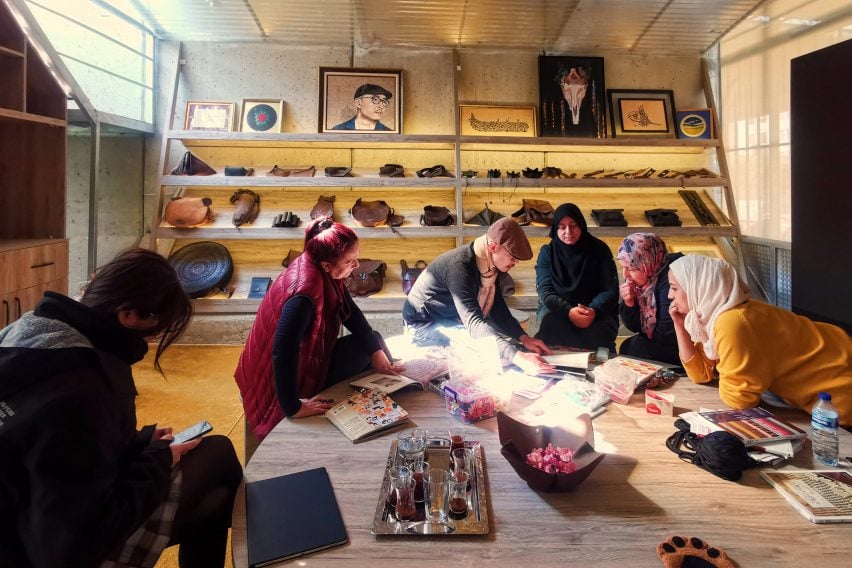
“During the programming and design process – spanning three years – we heavily engaged with both of the Turkish and Syrian communities to meet the shared common ground,” Chiu explained.
“This collaboration allowed the centre to serve everyone and improve the integration and inclusion of society on-site.”
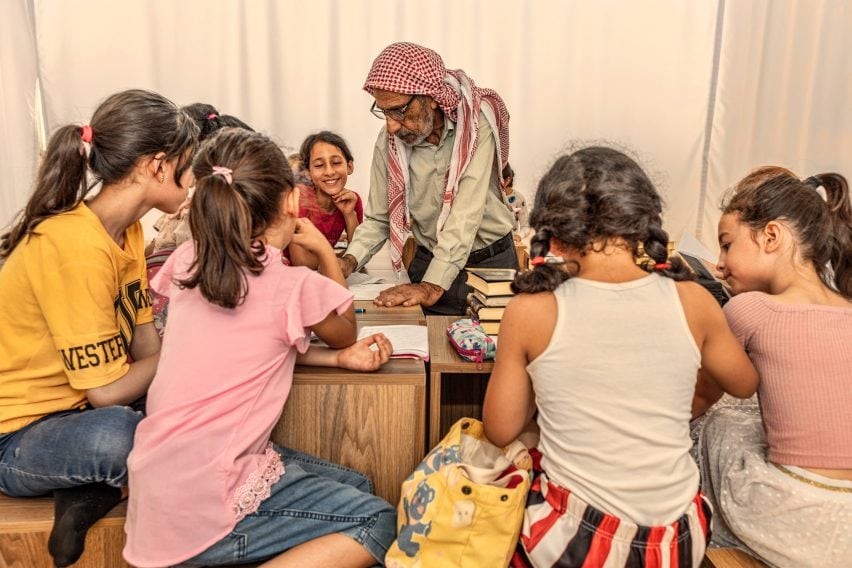
In addition to providing sanctuary for refugees, the centre offers educational programmes, cultural events and employment opportunities.
“Under our management, the centre offers a range of educational activities for nearly 2,000 children and provides job opportunities for almost 500 women,” Chiu explained.
“Additionally, the centre hosts a variety of events to support displaced and disadvantaged community groups.”
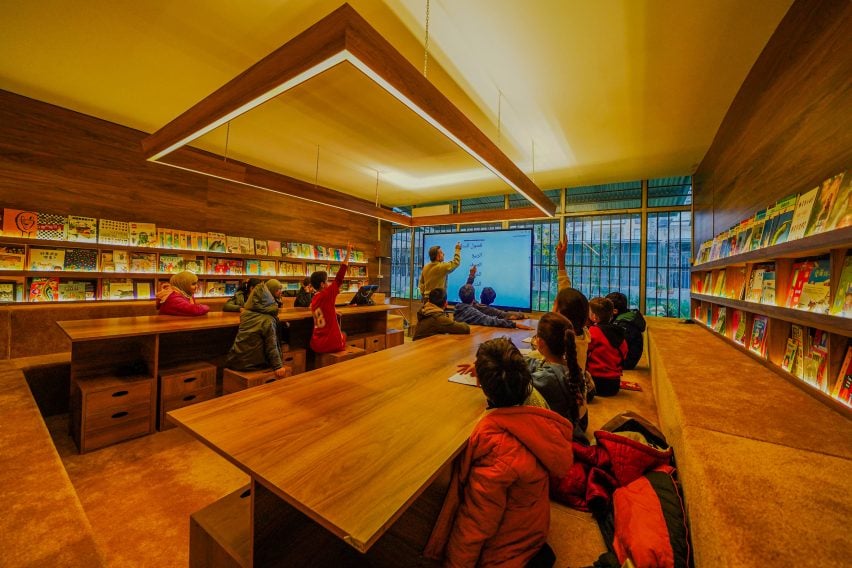
The Taiwan-Reyhanli Centre for World Citizens is among the shortlisted projects in the Civic Project category for this year’s Dezeen Awards.
Other community centres recently published on Dezeen include The Gong Music Centre by Atelier Oï in Cambodia and The Luanda Waterpoints project in Angola by Portuguese studio Paulo Moreira Architectures.
The photography is courtesy of Taiwan-Reyhanli Centre for World Citizens.

